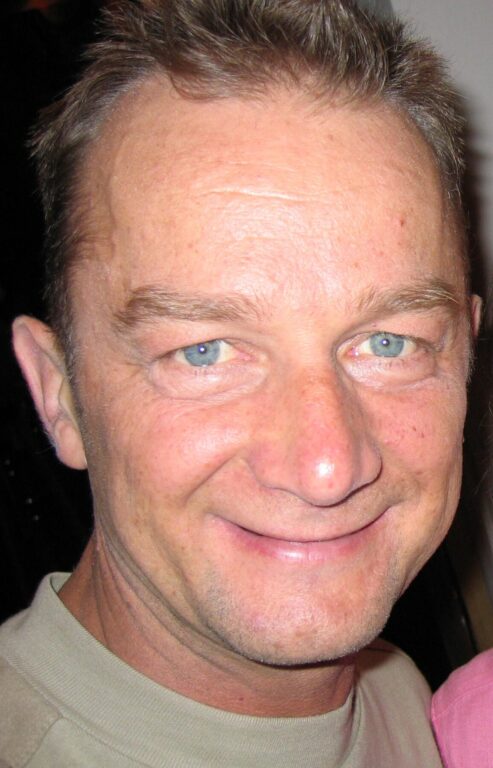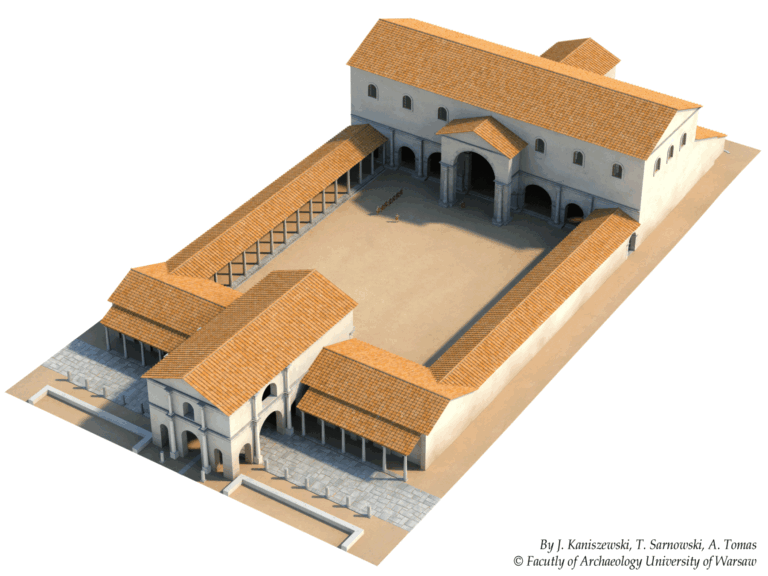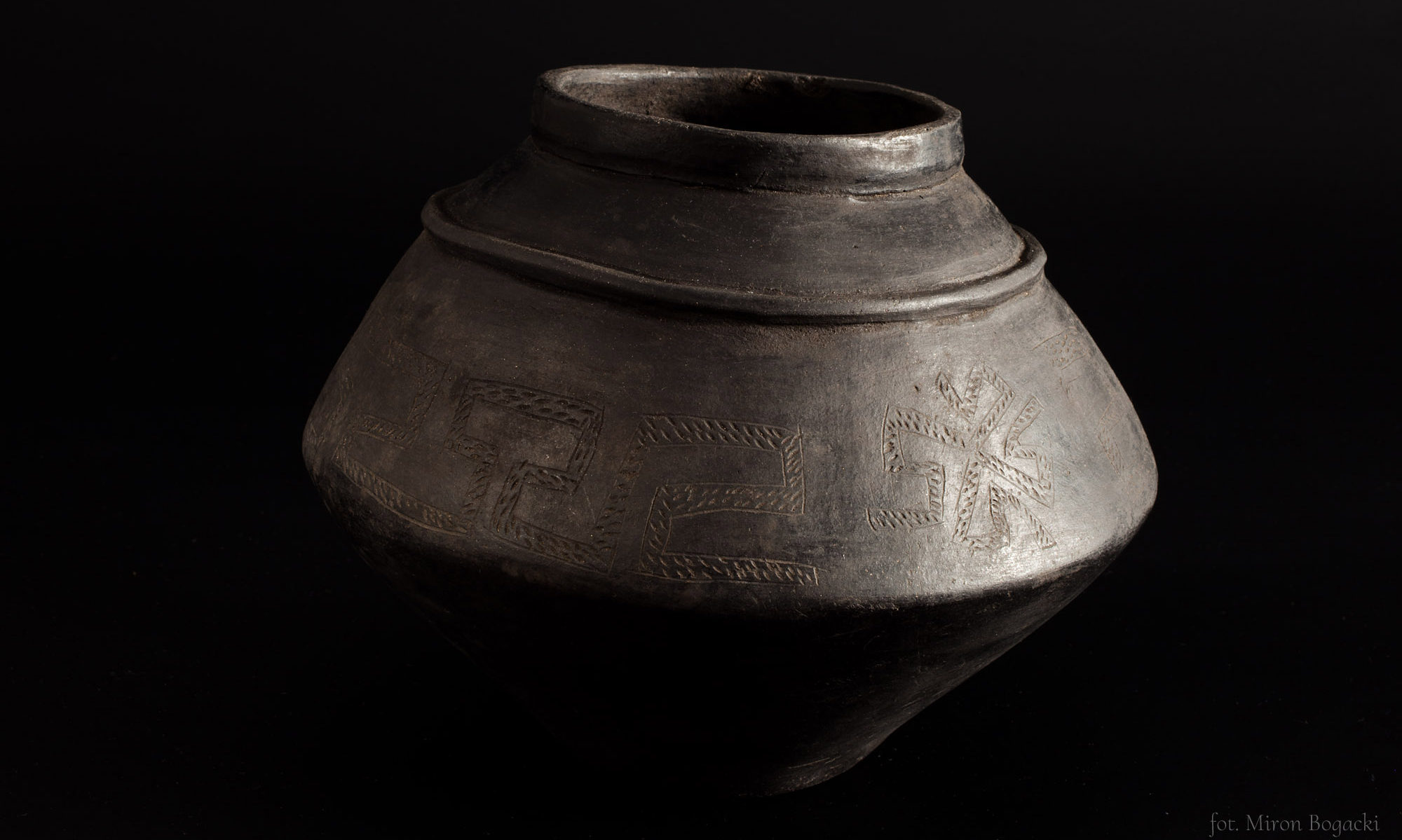Olszewski Marek Tycjan

dr hab. Marek Tycjan Olszewski
Katedra Archeologii Klasycznej
(lived in the years 1962–2024)
research interests:
– Archeology of Hellenism (but also of classical Greece), Archeology of Rome and Roman Provinces, Early Christian Archeology; Archeology of Late Antiquity (III-VII century)
– I am interested in geographic areas covering the Hellenistic Monarchies, the Roman Republic and the Roman Empire as a whole
– I am particularly interested in monuments of visual arts: ancient mosaics, but also Hellenistic and Roman paintings, and monuments of funerary art in the context of the architecture of private constructions of the Hellenistic and Roman elites (houses, villas, seaside villas, tombs). I treat the artifacts of visual arts as a pretext for a broader understanding of the historical, social, economic, cultural and religious issues of Hellenistic, Roman and late antique societies
– I use several methods in my researches: interdisciplinary research method, microhistory, and the cognitive method
bibliography and C.V.:
PROFESSIONAL RESUME PROFILE – CV OLSZEWSKI
A DETAILED ACCOUNT OF MY EDUCATION, SKILLS AND WORK EXPERIENCE – CV OLSZEWSKI
PDF’ textes of publications:
Academia.edu
RECENT SCIENTIFIC DISCOVERIES:
1. Discovery of the exact date of the foundation of Pella / Apamea in Syria, one of the largest and most important urban centers in the Hellenistic and Roman period. Discovery and description of the hitherto unknown historical context of the circumstances of the foundation of Pella / Apamea in the early autumn of 320 BCE See author’s articles in French, English and Italian: https://www.academia.edu/38354542 ; https://www.academia.edu/34559128 ; https://www.academia.edu/39501634 ; see articles in the Polish media: https://www.academia.edu/40526115 ; https://naukawpolsce.pap.pl/aktualnosci/news,78036 ; https://www.uw.edu.pl/skradziona-mozaika-zrodlem-wiedzy-historycznej/?highlight=olszewski ; see articles in the English media: https://www.academia.edu/40536908 ; https://www.academia.edu/40593760 ; https://scienceinpoland.pap.pl/node/78097 ; https://archaeologynewsnetwork.blogspot.com/2019/08/photos-of-looted-mosaics-help-pinpoint.html ; see articles in the Greek media: http://www.tapantareinews.gr/2020/02/blog-post_567.html.
2. Identification of the unknown and first portraits of Alexander the Great’s successors: Antipater, Cassander, but also Apama and Archippos; see author’s articles in French, English and Italian: https://www.academia.edu/38354542 ; https://www.academia.edu/34559128 ; https://www.academia.edu/39501634 .
3. Identification of the oldest water wheel, so-called norii, in Roman iconography; the mosaic is from the first half of the 4th century AD; see author’s article in French: https://www.academia.edu/38354542 ; see articles in the Polish media: https://naukawpolsce.pap.pl/aktualnosci/news,84916,polski-badacz-odkryl-wczesne-przedstawienie-mozaikowe-rzymskiego-kola ; https://www.academia.edu/44721187 ; https://www.uw.edu.pl/odkrycie-najstarszego-kola-wodnego-na-rzymskiej-mozaice-z-apamei/?highlight=olszewski ; in English: https://www.academia.edu/44901704 ; in the Turkish media: https://arkeofili.com/mozaikte-antik-roma-su-carkinin-en-eski-temsili-bulundu/ ; https://arkeonews.com/interpol-tarafindan-aranan-mozaik-yasadisi-satis-icin-cevrimici-yayinlandi/ .
4. Discovery of an important historical fact that the founder of Pella / Apamea was not a legendary figure, as previously thought, but a historical figure, namely the former archon eponymus of Athens – Archippus, who held his office from 321 to 320 BC; see the conference announcement from Vienna of the author’s article in English: https://www.academia.edu/44690524.
5. Discovery and explanation of the narrative and complex iconological program of five mythological and allegorical tales in the House of Aion in Cyprus. The mosaic is an anti-Christian polemic and for this purpose it uses numerous rhetorical figures. Most likely it adorned one of the rooms rented by the Neoplatonic society; see author’s articles in English: https://www.academia.edu/5403368 in French: https://www.academia.edu/43058571 ; see articles in the Polish media: https://www.uw.edu.pl/rozwiazanie-zagadki-rzymskiej-mozaiki-z-pafos/?highlight=olszewski ; https://naukawpolsce.pap.pl/aktualnosci/news,83915 ; https://archeologia.com.pl/starozytna-mozaika-z-pafos-byla-krytyka-chrzescijanstwa/ ; in English: https://scienceinpoland.pap.pl/node/84026 ; https://www.express.co.uk/news/science/1339647 ; https://en.mogaznews.com/collection/1583263 ; in the French media: http://decouvertes-archeologiques.blogspot.com/2020/10/une-ancienne-mosaique-dans-une-maison.html ; in Italian: https://www.danielemancini-archeologia.it/studi-sul-mosaico-della-casa-di-aion-a-paphos-cipro/ ; in the German media: https://antikewelt.de/2020/09/28/kritik-am-christentum-in-form-eines-mosaiks/ .
6. Discovery of eight unknown sundials on Roman mosaics. These new identifications contributed to the completion of the catalog of sundial representations on mosaics to fifteen, as only seven were known previously; see author’s article in French: https://www.academia.edu/19421274; see articles in the Polish media: https://naukawpolsce.pap.pl/aktualnosci/news,79854 ; https://www.uw.edu.pl/nowe-odkrycia-zegarow-slonecznych-na-mozaikach-rzymskich/?highlight=olszewski ; in English: : https://www.archaeology.org/news/8303-191218-ancient-mosaic-sundials ; https://scienceinpoland.pap.pl/node/79958 ; https://en.uw.edu.pl/new-discoveries-of-sundials-on-roman-mosaics/ .
Novae – sculptural and epigraphic landscape of the central part of the legionary fortress
Principal investigators: prof. dr hab. Tadeusz Sarnowski†, dr hab. Agnieszka Tomas
Name of the site: Novae
Country: Bulgaria
Partner institutions: Faculty of Archaeology University of Warsaw and the National Institute of Archaeology Bulgarian Academy of Sciences with the Museum
Type of the site: Roman legionary camp (castra legionis), civil settlement (canabae legionis) and late Roman town.
Chronology: 1st-6th century AD

Numerous statue bases of deities and emperors, sacrificial altars, and building inscriptions dating from the 2nd to thirties of the 5th century AD were found in the principia of the First Italic Legion and about fifty more found elsewhere were identified as originating from this building. The main objective of this project was to complete documentation of newly discovered inscriptions, to improve the documentation of older finds according to current standards and to prepare their publication. It has to provide maximum information about the palaeography of inscriptions and dedication formulae, time, place, circumstances, reasons of setting up statues of gods and emperors, and sometimes even financing the monument, altars, building or its dependencies, most probable material used to create statues, their size, types of sculptural representation and in some cases even the statue’s physical appearance, names, origin, social status and rank of the dedicators, place and role of the represented deity in the camp religion and in religious cults practiced in the province of Lower Moesia and in the whole lower Danubian region.
Thanks to the support of the National Science Centre, a set of monuments from the principia can be documented and developed – both the bases of statues, altars and fragments of statues, as well as building inscriptions and architectural elements, which will allow not only to recreate the appearance of the building, but also its interior design and changes that this interior design underwent in time. Based on these finds, archaeologists have created a 3D visualization of the complex, which will take into account the discovered monuments and remains, and is therefore the most faithful recreation of reality over 1,700 years ago. Such a procedure allows us to better understand the reasons for and the manner in which the military erected statues and inscriptions for religious, propaganda and political purposes.
Project title/financial support: “In medio castrorum. Sculptural and epigraphic landscape of the central part of the legionary fortress at Novae”, NCN, OPUS 11, nr UMO-2016/21/B/HS3/00030, planned period of realization 02.02.2017 – 01.02.2021.
![]()
Publications:
- Tadeusz Sarnowski, Novae und die legio I Italica unter Trajan und Hadrian, Archeologia 67, 2018, 57-71
- Tadeusz Sarnowski, Statio publici portorii in Novae (Niedermoesien) und eine neue Statuenbasis aus dem Stabsgebäude der 1. Italischen Legion, Studia Europaea Gnesnensia 16, 2017, 77-86 (DOI 10.14746/seg.2017.16.5)
- Tadeusz Sarnowski, Building the Early Christian Episcopal Complex with Inscribed Stones from the Roman Legionary Headquarters, Sacrum et profanum, Novae. Studies and Materials, vol. VI, Poznań 2018, 77-86
- Tadeusz Sarnowski, Komendantura rzymskiego legionu w Novae. Od odsłoniętych ruin do pełnowymiarowej wizualizacji w terenie, in: Donum Cordis. Księga poświęcona pamięci Jerzego Kolendo, J. Jakubiak (ed.), Warszawa, 2019, 335–345 (org/10.31338/uw.9788323538554.pp.335-345)
- Tadeusz Sarnowski, In medio castrorum legionis I Italicae at Novae. Preserved Remains, 3D Virtual Modelling and Full-size Visualisation on the Original Site, in: Limes XXIII. Roman Frontier Studies, Mainz 2018, 350-359
- Tadeusz Sarnowski, udział w Międzynarodowej Konferencji Naukowej XIII. Limes Congress 2015 – Germany, 12th-23rd September 2015. Tytuł wystąpienia: Das Stabsgebäude des Legionslagers Novae. Baubestand virtuelle Idealrekonstruktion und Nachbau in Originallage.
- Tadeusz Sarnowski, udział w Międzynarodowej Konferencji Naukowej „Roman Empire: A 21st Century Perspective… In Memoriam Geza Alföldy (1935-2011), 8-10.11.2016, Gniezno. Tytuł wystąpienia: Neues aus Novae in Niedermoesien zum illyrischen Zollbezirk.
- Adam Łajtar, udział Międzynarodowej Konferencji Naukowej „3rd Conference on the Roman Danubian Provinces. Society and Economy, 10-15th November 2017, Wien”. Tytuł wystąpienia: New Inscriptions from Novae Referring to the Institution of pastus militum.
- Adam Łajtar, Tomasz Płóciennik, Agnieszka Tomas, ‘A third-century senator twice-honoured at Novae’, Zeitschrift fur Papyrologie und Epigraphik 223, 2022, 243ff.
Other research project realised in Novae by the Faculty (former Institute) of Archaeology University of Warsaw:
Novae 2012-2015. Research on settlement structures near the Roman legionary camp at Novae (Lower Moesia) using non-destructive prospection methods (A. Tomas, completed)
Novae 2009-2011. The headquarters building and the fortifications (T. Sarnowski, completed)

